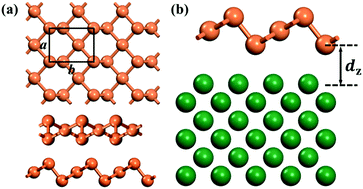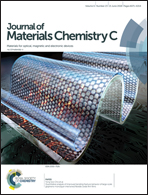Monolayer tellurene–metal contacts
Abstract
Two-dimensional (2D) atomic crystals are promising channel materials for next generation electronics due to its outstanding gate electrostatics and few dangling bonds. Recently, tellurene, a new experimentally accessible Group-VI 2D tellurium, has drawn attention due to its large on/off ratios, high mobility and significant air stability. Herein, for the first time, we comprehensively examine the interfacial characteristics of monolayer (ML) tellurene field-effect transistors with a series of common bulk metals and 2D graphene as electrodes by using ab initio electronic structure calculations and quantum transport simulations. Furthermore, a lateral n-type Schottky contact is formed when contacting with Au in the a direction and Sc in both directions, while a lateral p-type Schottky contact is formed with Au in the b direction, and Cu, Ni, Ag, Pt, and Pd in both directions as a result of strong Fermi level pinning (FLP). The obtained FLP factor is 0.15 in the a direction and 0.09 in the b direction. Remarkably, a highly desirable lateral p-type Ohmic contact is formed with graphene in both directions. This investigation gives insight into the interfacial properties and guidance in electrode selection for ML tellurene devices.

- This article is part of the themed collection: 2018 Journal of Materials Chemistry C HOT Papers


 Please wait while we load your content...
Please wait while we load your content...